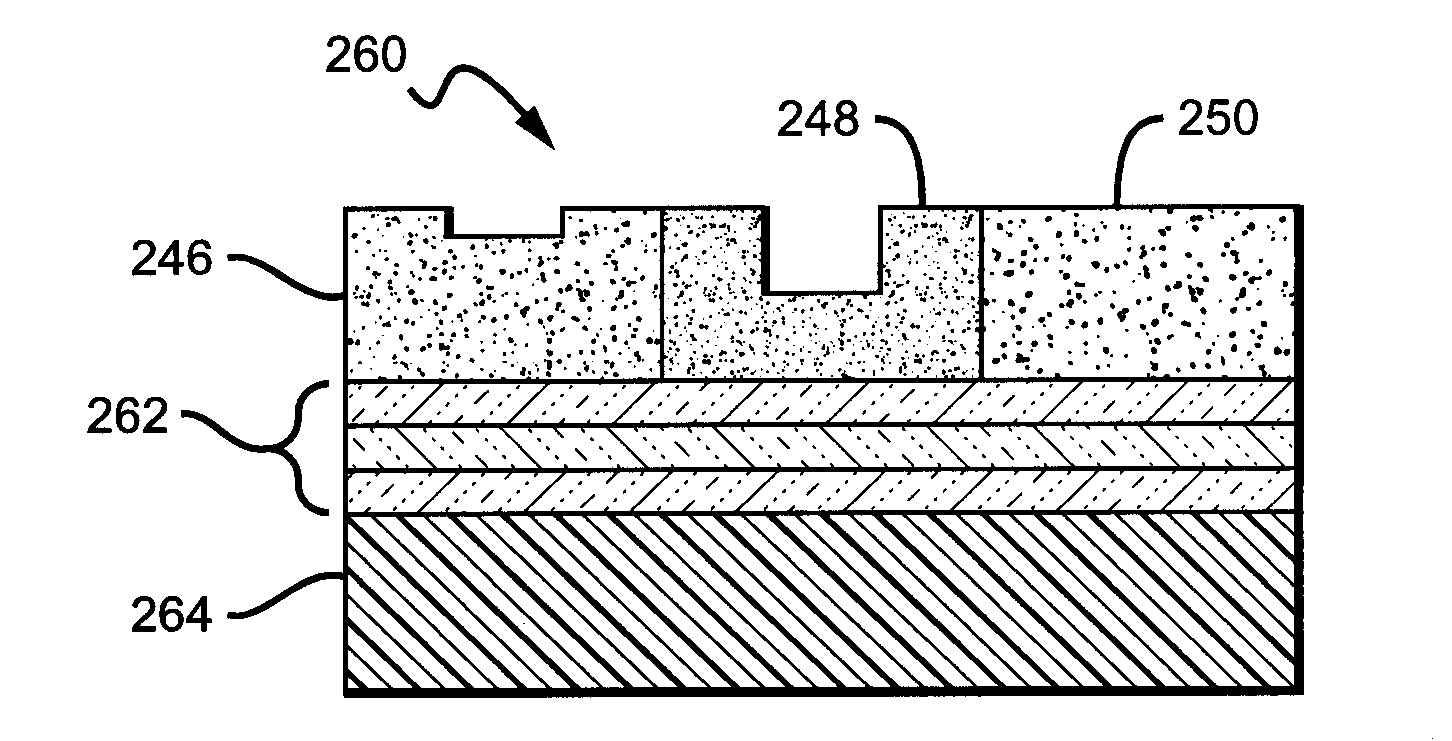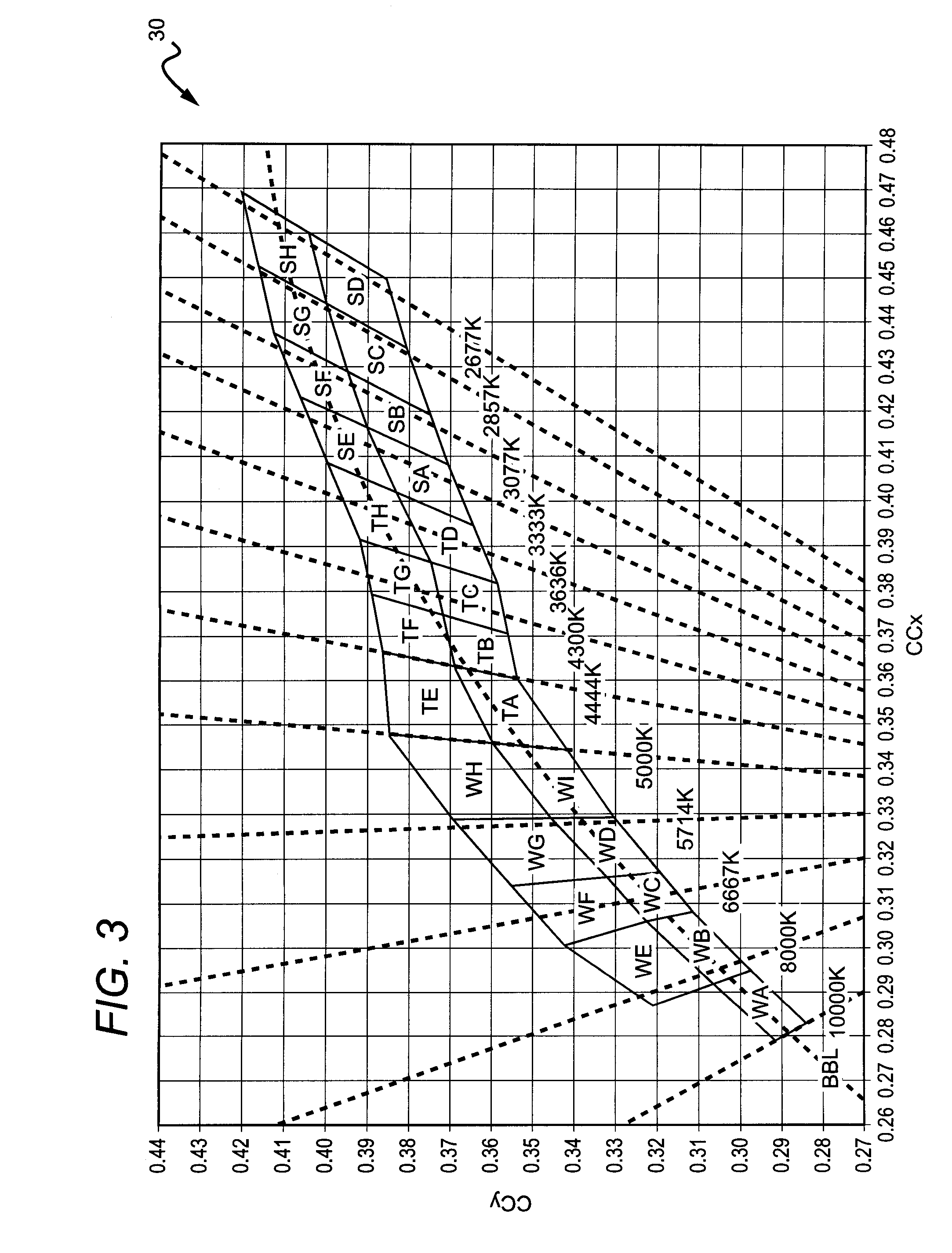Emission tuning methods and devices fabricated utilizing methods
a technology of emission tuning and emission characteristics, applied in semiconductor/solid-state device testing/measurement, manufacturing tools, instruments, etc., can solve the problems of difficult to consistently reproduce leds with the same or similar emission characteristics, difficult to control the geometry and thickness of phosphor layers, and non-uniform color temperature, etc., to achieve high yield of led chips, control the emission characteristics of led chips, and reduce the amount of conversion materials
- Summary
- Abstract
- Description
- Claims
- Application Information
AI Technical Summary
Benefits of technology
Problems solved by technology
Method used
Image
Examples
Embodiment Construction
[0047]The present invention is directed to methods for tuning the emission characteristics of solid state emitters by altering the amount of conversion material over emitters, and is also directed to emitters fabricated using the methods. The present invention provides fabrication methods that are particularly applicable to wafer level fabrication of LEDs and altering the conversion material at the wafer level to reduce or eliminate the variations in emission characteristics of LED chips across the wafer. The methods according to the present invention can also be used to alter the emission characteristics of individual LEDs or groups of LEDs singulated from a wafer.
[0048]The present invention can be used to fabricate different LED chips but is particularly applicable to fabricating white emitting LED chips. In one such embodiment, a wafer of blue emitting LEDs having a dominant emission wavelength for example of between approximately 440 to 480 nm can be coated with a conversion mat...
PUM
| Property | Measurement | Unit |
|---|---|---|
| wavelength distribution | aaaaa | aaaaa |
| thickness | aaaaa | aaaaa |
| emission wavelength | aaaaa | aaaaa |
Abstract
Description
Claims
Application Information
 Login to View More
Login to View More - R&D
- Intellectual Property
- Life Sciences
- Materials
- Tech Scout
- Unparalleled Data Quality
- Higher Quality Content
- 60% Fewer Hallucinations
Browse by: Latest US Patents, China's latest patents, Technical Efficacy Thesaurus, Application Domain, Technology Topic, Popular Technical Reports.
© 2025 PatSnap. All rights reserved.Legal|Privacy policy|Modern Slavery Act Transparency Statement|Sitemap|About US| Contact US: help@patsnap.com



